As the crisp air of autumn sets in, bird enthusiasts everywhere are gearing up for the best time of year to start bird feeding. Setting up bird feeders during the fall not only attracts a wide variety of local breeding birds, but also allows for the opportunity to welcome migrant birds seeking nourishment and rest during their journey. With natural food sources dwindling as the season progresses, feeders become a beacon of nourishment for these feathered friends. Additionally, by providing feeders during the fall, bird lovers can look forward to the arrival of wintering birds and enjoy the increased diversity of species that will grace their feeders throughout the colder months. The sights and sounds of these winged visitors are sure to bring delight and wonder to any backyard birdwatching experience.
Setting up Bird Feeders in the Fall
Fall is the perfect time to set up bird feeders in your backyard. Not only does it provide an opportunity for you to enjoy bird watching, but it also attracts a variety of bird species. In the fall, bird feeders can play a crucial role in supporting local breeding birds, migrant birds, and wintering birds.
Attracts Local Breeding Birds
One of the major benefits of setting up bird feeders in the fall is attracting local breeding birds. As natural food sources start to dwindle, these birds are more likely to visit feeders in search of sustenance. By providing them with a reliable food source, you can support their breeding efforts and help ensure the survival of their offspring.
Attracts Migrant Birds
Migrant birds also play a significant role in fall bird feeding. These birds use resident birds at feeders as cues to find food and rest during their journey. By setting up bird feeders, you create important stopover points for these weary travelers, giving them the energy they need to continue their migration.
Attracts Wintering Birds
In addition to local breeding and migrant birds, bird feeders in the fall also attract wintering birds. As the temperatures drop and food becomes scarce, these birds rely on feeders to supplement their diet. By providing them with a consistent food source, you not only help them survive the winter but also increase the variety of bird species that will visit your feeders.
Reasons for Increased Bird Feeder Visits in the Fall
There are two main reasons why birds frequent feeders more during the fall season.
Dwindling Natural Food Sources
As fall sets in, many natural food sources for birds start to dwindle. Trees shed their leaves, reducing the availability of fruits and seeds. Insects become less abundant, making it harder for birds to find protein-rich meals. As a result, birds are more likely to visit bird feeders in search of a reliable and easily accessible food source.
Migrant Birds Seeking Food and Rest
Fall is a time of migration for many bird species. These birds are on a long journey south, often spanning thousands of miles. Along their route, they rely on resident birds and their feeders as cues to find food and rest. When they spot birds congregating around bird feeders, they see it as a sign that food is available nearby. By setting up feeders in the fall, you provide these migrant birds with a much-needed respite and nourishment.
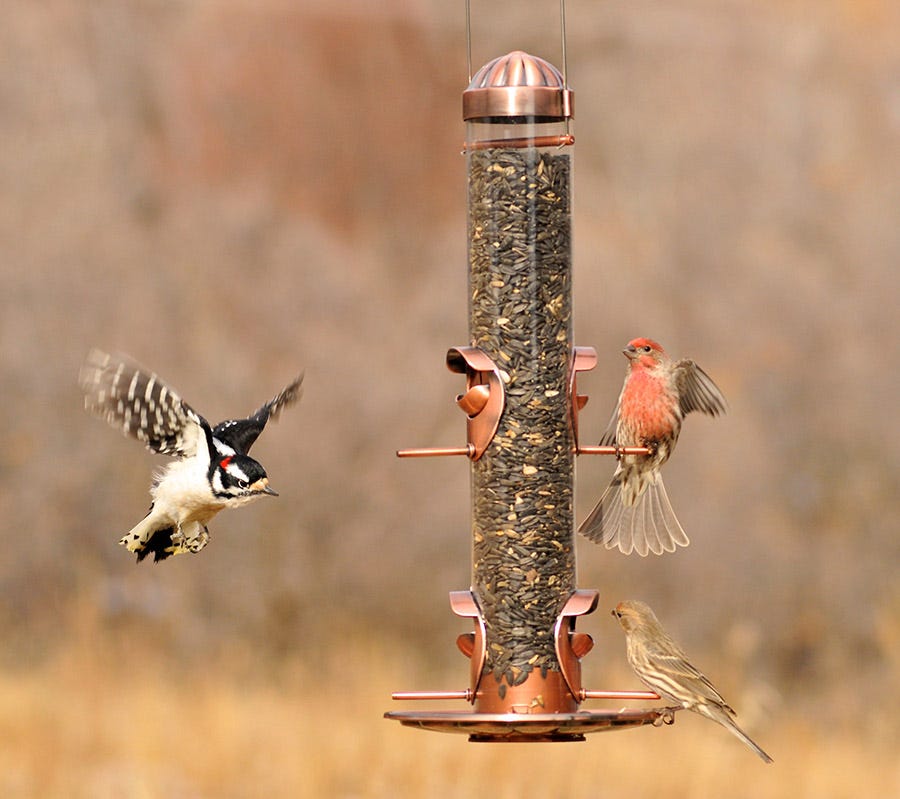
Benefits of Bird Feeding in the Fall
Setting up bird feeders in the fall offers various benefits for both birds and bird enthusiasts.
Increased Variety of Species
Fall bird feeding attracts a wide variety of bird species. With natural food sources diminishing, birds are more likely to explore alternative food options, including the offerings at your feeders. This presents a fantastic opportunity for bird enthusiasts to observe and identify different species. Seeing colorful visitors like finches, warblers, and sparrows can bring joy and excitement to any bird watcher.
Opportunity for Bird Watching
Bird feeding in the fall provides an excellent opportunity for bird watching. By setting up feeders, you create a convenient and visible location where birds can gather. This makes it easier for you to observe their behaviors, feeding patterns, and interactions with other birds. Whether you enjoy sitting quietly near the feeders or capturing stunning bird photographs, fall bird feeding offers endless entertainment for bird enthusiasts.
Helping Birds Prepare for Winter
Fall is a crucial time for birds to prepare for the challenges of winter. By providing them with a reliable food source, you help them replenish their energy reserves for migration or survive the upcoming cold months. Additionally, feeders can supplement their diet with essential nutrients, such as fats and proteins, which are necessary for maintaining healthy plumage and supporting their immune system. Your bird feeders can make a significant difference in helping birds thrive during the winter season.
Types of Bird Feeders for Fall Bird Feeding
To attract birds to your backyard in the fall, it is essential to choose the right type of bird feeders. Here are three popular options:
Platform Feeders
Platform feeders are flat trays that offer ample space for birds to perch and feed. They are versatile and attract a wide variety of species, both large and small. By choosing a platform feeder with a roof or mesh bottom, you can protect the food from rain and prevent waterlogging. Platform feeders are especially suitable for feeding larger birds, such as jays and cardinals.
Hopper Feeders
Hopper feeders are designed with a chamber that holds the birdseed. As birds perch on the feeding tray, the seed is released through small openings, creating an easily accessible food source. These feeders can accommodate a substantial amount of seed, reducing the frequency of refilling. Hopper feeders are popular among a range of bird species, including finches, sparrows, and chickadees.
Tube Feeders
Tube feeders are long, cylindrical feeders with multiple feeding ports. The seed is housed inside the tube, and birds can access it by perching on the feeding ports. Tube feeders are an excellent choice for feeding smaller bird species, such as goldfinches and house finches. They protect the seed from rain and provide a controlled feeding environment.
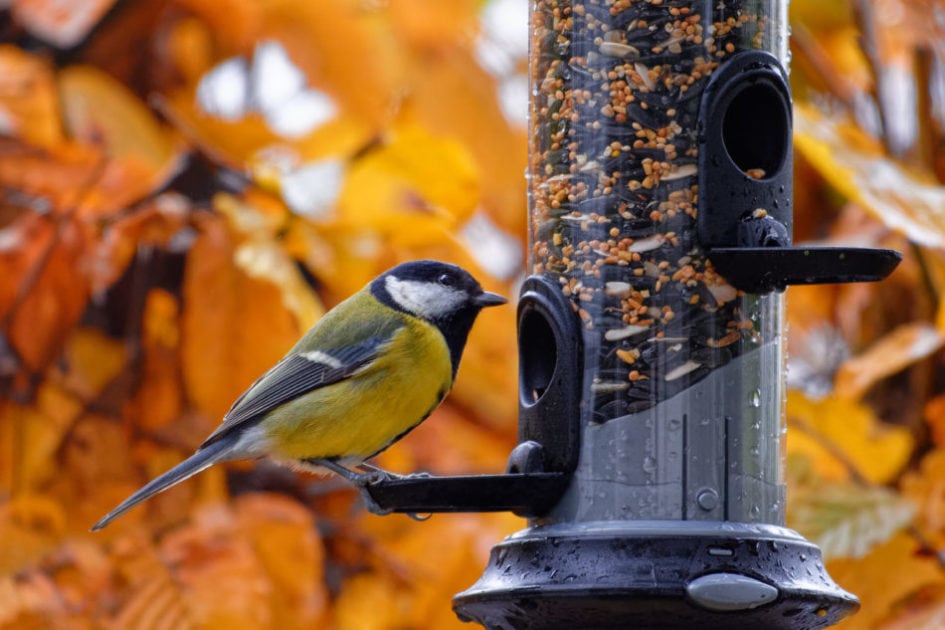
Choosing Bird Feed for Fall Feeding
Selecting the right bird feed is crucial for attracting a diverse range of bird species to your feeders in the fall. Here are three common types of bird feed:
Seeds
Offering a variety of seeds is a surefire way to attract different bird species. Black-oil sunflower seeds are a popular choice, as they have a high fat content and are loved by many bird species. Other common seed options include nyjer seeds, millet, and safflower seeds. Mixing different seeds in your feeders will cater to a broader range of birds’ preferences.
Suet
Suet is an excellent source of fat and protein, making it highly appealing to birds, especially during the colder months. It is a solidified mixture of animal fat and other ingredients, such as seeds, fruits, and insects. Suet can be offered in specialized suet feeders or placed in mesh bags that birds can cling to while feeding. It attracts woodpeckers, nuthatches, and other insect-eating birds.
Nectar
For attracting hummingbirds and other nectar-feeding birds, nectar feeders are essential in the fall. Nectar is a sugar solution made by dissolving four parts water with one part white granulated sugar. It is important to avoid using honey or artificial sweeteners, as they can be harmful to birds. Hang the nectar feeders in visible locations and change the solution regularly to keep it fresh.
Location and Placement of Bird Feeders in the Fall
Choosing the right location and placement for your bird feeders is crucial to attract and accommodate a variety of bird species. Consider the following factors when setting up your feeders in the fall:
Near Sheltered Areas
Place your feeders near trees, shrubs, or other sheltered areas. Birds will appreciate having nearby perches to rest on while they wait for their turn at the feeders. Sheltered locations also provide protection from harsh weather conditions, including strong winds and heavy rain.
Visibility and Accessibility for Birds
Make sure your feeders are easily visible to birds from a distance. Placing them near a window or in an open area will make it easier for birds to spot the feeders and feel safe approaching them. Avoid placing feeders too close to dense vegetation, as this may provide cover for predators that could threaten the visiting birds.
Proximity to Natural Food Sources
While your bird feeders serve as supplemental food sources, it is beneficial to place them in proximity to natural food sources. This can include fruit-bearing trees, flowering plants, or areas with abundant insect activity. By locating your feeders near these resources, you create a convenient hub for birds to feed and rest before exploring their natural surroundings.
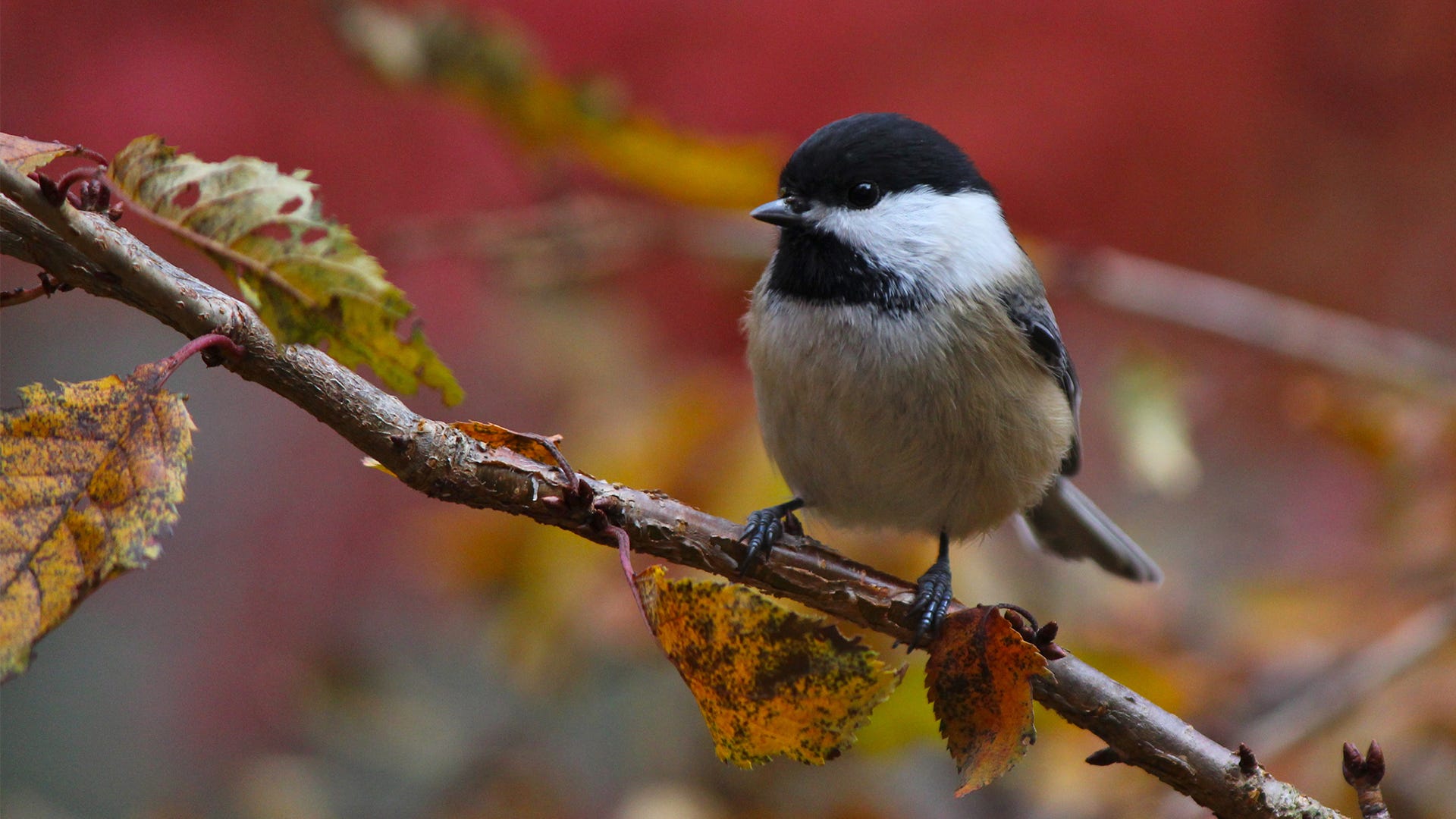
Fall Bird Feeding Etiquette
When feeding birds in the fall, it is important to follow certain etiquette guidelines to ensure the health and safety of the birds. Here are some key practices to keep in mind:
Keep Feeders Clean
Regularly clean your bird feeders to remove dirt, debris, and mold buildup. Use warm, soapy water to scrub the feeding ports, trays, and tubes. Rinse thoroughly and allow the feeders to dry before refilling them. Clean feeders prevent the spread of diseases and maintain a hygienic feeding environment.
Prevent the Spread of Disease
In addition to cleaning the feeders, it is important to prevent the spread of diseases among feeding birds. Avoid overcrowding by providing multiple feeders and spreading them out across your yard. This reduces the chances of direct contact and minimizes the transmission of diseases. If you notice sick birds, remove the feeders temporarily to prevent further contamination.
Provide Fresh Water
Alongside bird feeders, providing a fresh water source is essential for birds’ well-being. Birds need water for drinking and bathing, especially during the fall when natural water sources may be limited. Place a birdbath or shallow dish of water near your feeders, ensuring it is cleaned and refilled regularly. Changing the water frequently prevents the buildup of bacteria and keeps it inviting for the feathered visitors.
Attracting Different Bird Species in the Fall
To attract a diverse range of bird species to your feeders in the fall, it is important to understand the preferences and requirements of local birds. Here are two key strategies:
Identifying Local Birds
Observing the birds in your area is the first step in attracting specific species. Take note of the birds that visit your yard or nearby natural areas. Pay attention to their distinctive features, feeding behaviors, and preferred habitats. Consulting a bird identification guide or using online resources can help you identify the different bird species.
Researching Preferred Foods and Habitats
Once you have identified the local bird species, research their preferred foods and habitats. Different birds have different dietary preferences, ranging from seeds to insects to nectar. Tailor your bird feeders and offerings to accommodate the specific needs of the species you want to attract. Additionally, provide natural elements in your yard, such as trees, shrubs, and flowers, that mimic the natural habitats of these birds.
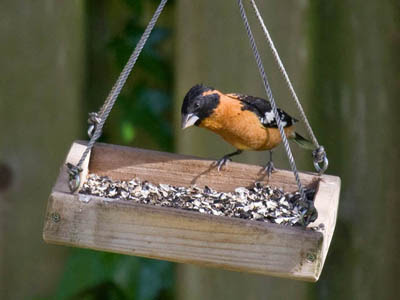
Monitoring and Maintaining Bird Feeders in the Fall
Regular monitoring and maintenance of your bird feeders are essential to ensure they remain attractive and safe for visiting birds. Here are some important tasks to consider:
Regular Cleaning
Clean your bird feeders on a regular basis to prevent the buildup of dirt, mold, and bacteria. Depending on the feeder type and the amount of bird activity, clean them at least once every two weeks. Ensure all parts of the feeder, including feeding ports, trays, and tubes, are thoroughly cleaned and rinsed. A clean feeder will not only attract more birds but also keep them healthy.
Refilling and Rotating Feeders
Regularly check the seed levels in your feeders and refill them as needed. In the fall, birds rely heavily on your feeders as natural food sources become scarcer. To prevent the depletion of a single feeder, rotate between different feeders, providing a continuous supply of food. This also helps attract a wider variety of species to your yard.
Checking for Damage
Inspect your bird feeders for any signs of damage, such as cracks, loose parts, or squirrel interference. These issues can compromise the safety and effectiveness of the feeders. Repair or replace damaged feeders promptly to avoid accidents and ensure a positive feeding experience for the birds.
Conclusion
Setting up bird feeders in the fall brings a multitude of benefits to both birds and bird enthusiasts. By attracting local breeding birds, migrant birds, and wintering birds, you support their survival and provide valuable opportunities for observation and enjoyment. Choosing the right feeders, offering suitable bird feed, and placing them strategically in your yard will help attract a diversity of bird species. Remember to practice good bird feeding etiquette, regularly monitor and maintain the feeders, and provide fresh water for the visiting birds. Fall bird feeding is a rewarding activity that enhances biodiversity and fosters a deeper appreciation for the natural world.
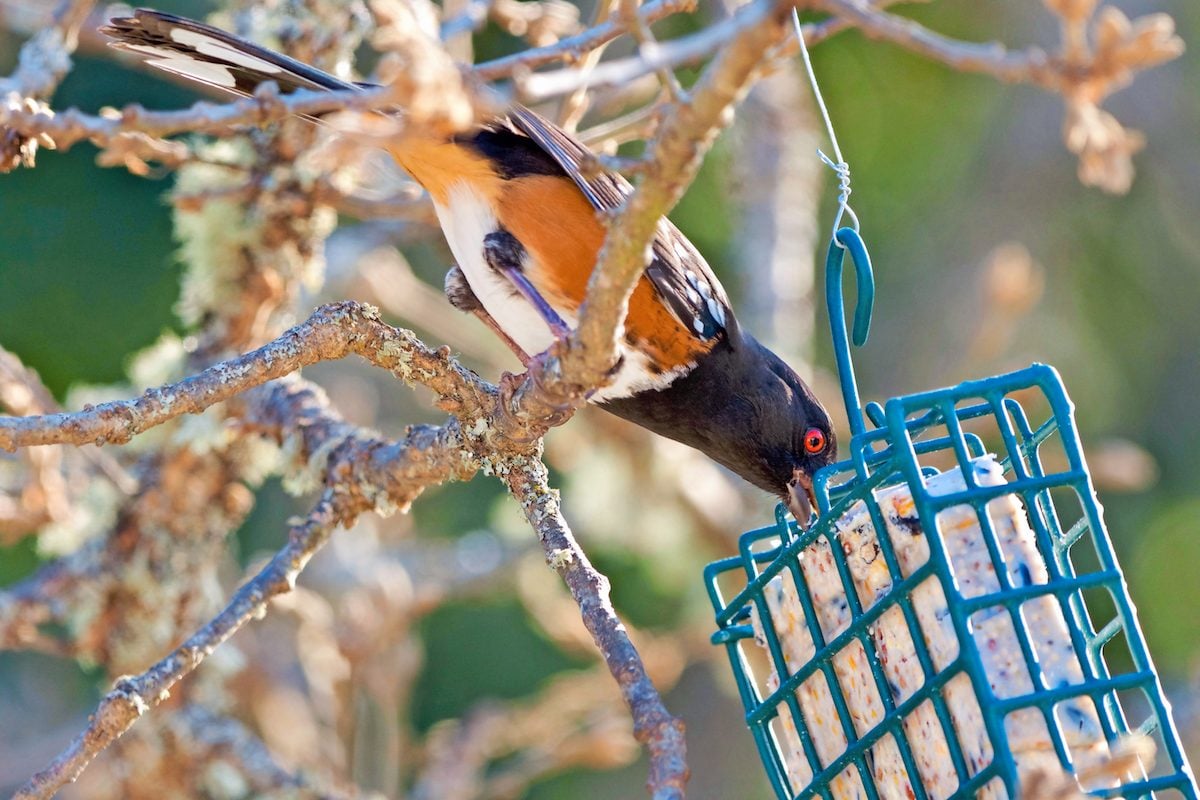
Leave a Reply